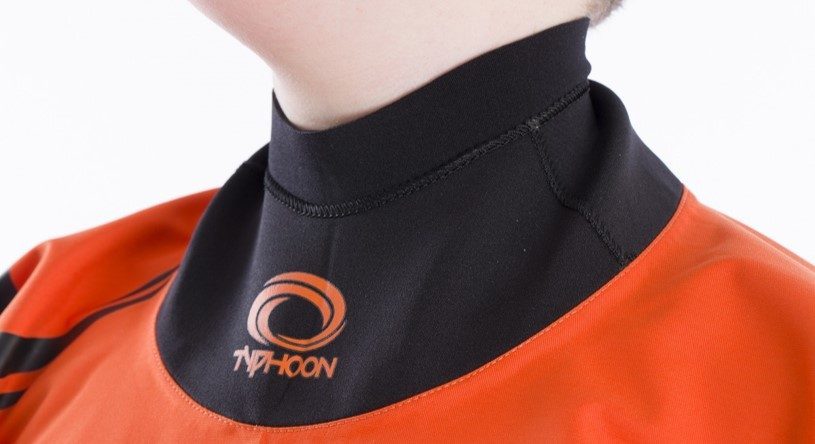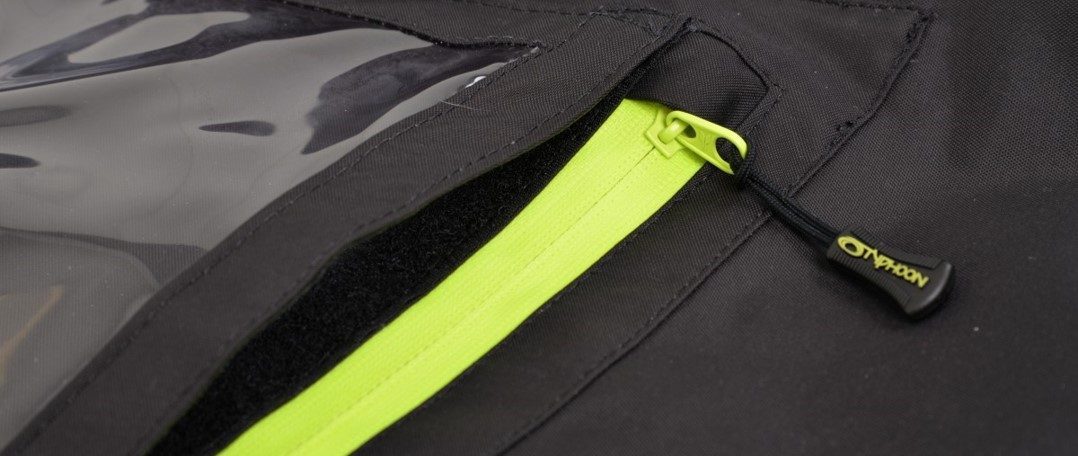How to choose and maintain your dry suit ?

The dry suit, the faithful companion of the sailor in winter !
A dry suit or drysuit is the most radical solution to keep you warm during the winter months or in particularly difficult conditions. The name refers to a suit that combines the waterproof and breathable properties of a jacket + coveralls while adding waterproof zippers and waterproof seals at the ends (cuffs, collar and feet). Usually designed for light sailing and kayaking, dry suits are also used for board sports such as kiting or windsurfing, but also for certain exposed positions on small fast keelboats (sports boats) or multihulls over 5 meters. A dry suit differs from a neoprene suit in that you stay dry under the suit. We can therefore manage the heat and breathability by a system of a first layer of technical underwear and a second warm layer (fleece or primaloft).
What are the criteria for choosing a dry suit?
The choice of the technical fabric of the suit: membrane or not membrane?
Obviously, to stay dry under a dry suit, you need to prevent any water from entering and evacuate the moisture / perspiration generated by the body
This is only possible by using a fabric coated with a microporous material or by using a membrane. As for the watch jackets, the dry suits are classified under 2 categories:
- Coated dry suits: Budget 400 to 600 euros (used for light sailing and day trips)
- Membrane dry suits: Budget 600 to 1000 euros (generally used for ocean races, sailing over several days)
The choice of collar - cuffs - feet finishing: Latex or not Latex, Slippers or not slippers?
Beyond the questions of possible allergies, latex is the most efficient material to make sleeves for the cuffs, collar and feet of the dry suit. The problem with latex is that it is more fragile. When you put on or take off your dry suit, it is often a rather perilous gymnastics, you sometimes pull a little hard on the sleeves to put them on or take them off. The latex, if it is split, tears along the whole length and then you just have to change the sleeve! Of course the performance is better but the risk of seeing your suit dry with torn sleeves is not negligible (especially considering the budget). That's why "general public" dry suits are usually equipped with PU or Neoprene collars and cuffs and not Latex, to guarantee a better durability in case of intensive use (clubs, youth, regattas, ...).

Usually most dry suits are equipped with Latex booties, some of them covered with a layer of anti-abrasion fabric. But for bare latex socks, it is advisable to wear protective oversocks to avoid damaging the latex of the socks; Some wetsuits oriented towards gliding (Prolimit in particular) completely remove the latex sock in favor of neoprene/PU ankle sleeves. This allows to keep a certain thinness on the feet and thus to enter well the feet in the footstraps.
The closing zip: TIZIP or not TIZIP?
Whether it is vertical or horizontal, in the belly or in the back, the zip of the dry suit is the central element of possible dysfunctions and sources of water entry in your dry suit. A poorly maintained zip or one that does not age well and your suit is in the garbage can. To avoid this, two tips:
- Make sure your zipper is a TIZIP brand, a patented brand of waterproof zippers that ensure this core component is of the highest quality available.
- Maintain your zipper regularly, of course by rinsing it with plenty of (warm) water after every trip, even in fresh water, and by regularly greasing the zipper with the white grease provided for this purpose and usually delivered with every dry suit.

How do I maintain my dry suit to keep it as long as possible ?
There is no secret, the more you use it the more you reduce its life span. But its lifespan is also strongly influenced by the way you maintain it.
Take your time, the sleeves, collar and slippers are fragile!
Putting on the suit is usually done in ideal conditions, getting out of the dry suit is sometimes an obstacle course. Soaked (outside only), tired, remember when you take off the dry suit that the more you take your time, the more you preserve the integrity of the fragile parts: the zip, the sleeves, the collar and the slippers. Also avoid stepping on gravel through the suit while putting on or taking off. Micro cuts are often related to putting on or taking off on abrasive or sharp ground.
Rinse, rinse, rinse!
Rinsing, preferably with warm water, removes salt deposits or any other substance that would impair the breathability of the dry suit. Salt, especially if it settles, creates patches and gradually cracks the fabric. It also dissolves/welds zippers and parts. To avoid all this, it is best to take a shower with the dry suit or to let it soak in a tub of water. If it is necessary to wash the suit (odors, stains), do not use traditional detergents or soap. Use a special detergent for technical clothing, called soap-free detergent. This will prevent soap deposits on the fabric of the suit.
Maintain the Zip and the Sleeves, store them in a dry place
Once in a while, it is important to grease the zip, especially if it has been in contact with sand or dust. The zip is a crucial part of the dry suit and should be cared for accordingly. For the sleeves/slippers, same story except that it is not a question of greasing them but simply of talcuming them if necessary, especially when you are going to store your suit in a cupboard for the months of inactivity. Needless to say, when you store your dry suit for a few months, it is understood that it must be dry!
My dry suit is torn! What should I do?
There are two solutions to this. Your suit is still under warranty (usually 2 years), you can see with your dealer if the tear or the malfunction can be taken under the manufacturer's warranty. If this is not the case, the workshop will offer you an estimate for the repair. Welding new sleeves / collar / slippers, patching the fabric, replacing the waterproof zip, these are the most common repairs, related either to a malfunction, or to a little too intensive use.
If you are a do-it-yourselfer, it is also possible to buy latex sleeves, collars and socks in spare parts as well as special neoprene glue for repairing neoprene wetsuits and dry suits. A few hours of work and you're done. Your dry suit can once again accompany you on all types of water!
Find dry suits, accessories for dry suits and spare parts for maintenance on our dedicated space on Picksea.com






 By Marie de Picksea
By Marie de Picksea
